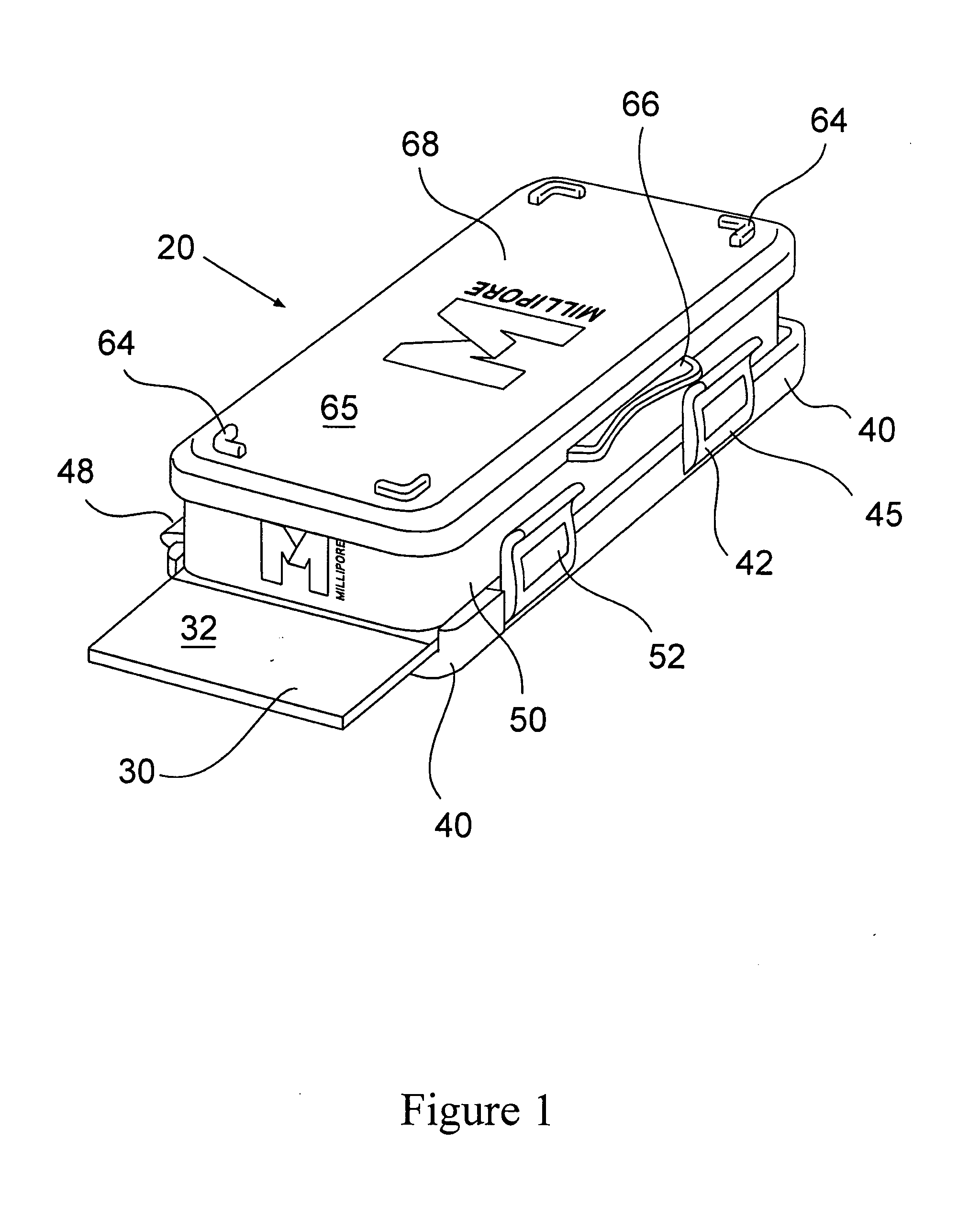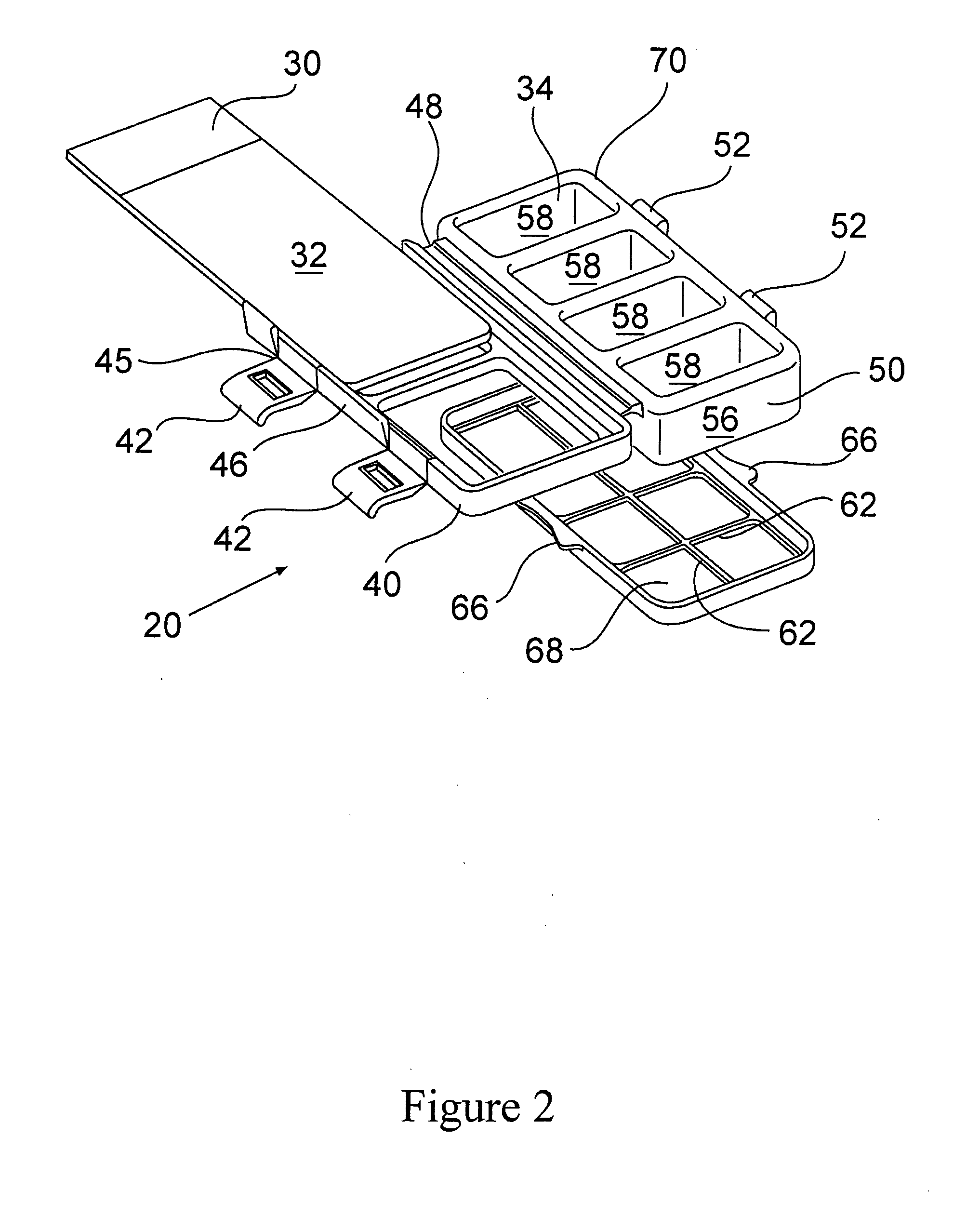Biological culture assembly
a technology of biological culture and assembly, which is applied in the field of biological culture assembly or vessel, can solve the problems of difficult to grow multiple and/or different cell lines, possible cross-contamination between wells, and cumbersome removal process, and achieve the effects of speeding up biological sample testing and culturing, facilitating biological, chemical and molecular bioreactions, and being convenient to us
- Summary
- Abstract
- Description
- Claims
- Application Information
AI Technical Summary
Benefits of technology
Problems solved by technology
Method used
Image
Examples
Embodiment Construction
[0002]1. Field of the Invention
[0003]The present invention relates generally to biological culture assemblies or vessels. More particularly, it relates to a resealable or a single use cell culture assembly for receiving microscope slide inserts, as well as kits and methods relating to using the assembly.
[0004]2. Background of the Invention
[0005]Cell culture vessels such as slides, flasks, dishes, tubes and the like are commonly used in biological research, medical laboratory practices, and biomedical diagnostic applications to grow and culture various cell and tissue test samples, as well as testing for the presence of microorganisms in mammalian cell and tissue test samples.
[0006]One method used to detect the presence of a microorganism causing an infection is to attempt to isolate and culture the microorganism from a patient in an artificial medium that permits the growth of selective microorganisms. If the microorganism is present in the patient's specimen, it will grow in the me...
PUM
| Property | Measurement | Unit |
|---|---|---|
| angle | aaaaa | aaaaa |
| angle | aaaaa | aaaaa |
| perimeter | aaaaa | aaaaa |
Abstract
Description
Claims
Application Information
 Login to View More
Login to View More - R&D
- Intellectual Property
- Life Sciences
- Materials
- Tech Scout
- Unparalleled Data Quality
- Higher Quality Content
- 60% Fewer Hallucinations
Browse by: Latest US Patents, China's latest patents, Technical Efficacy Thesaurus, Application Domain, Technology Topic, Popular Technical Reports.
© 2025 PatSnap. All rights reserved.Legal|Privacy policy|Modern Slavery Act Transparency Statement|Sitemap|About US| Contact US: help@patsnap.com



